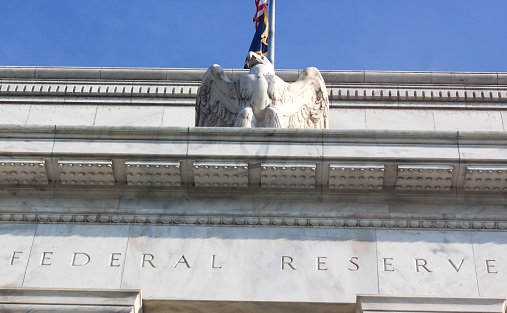Trade is tentative at the start of the new week, with conviction lacking during Asia Pacific hours amid a lack of Chinese, Taiwanese and Australian participants who were away for public holidays. US equity markets continue to trade at record high levels, with E-mini S&P 500 futures at 4250 and Nasdaq 100 futures supported to the north of the 14K level, both trading within very thin ranges in premarket trade. US bond markets are also subdued, with 10-year yields going sideways just above 1.45%, whilst crude oil prices are grinding very steadily higher, with WTI hitting fresh cycle highs around $71.50 this morning. Gold is under some pressure and has slipped from around the $1880s to current levels around $1860.
The G7 summit in which took place over the weekend in Cornwall, the UK, has predictably not had an impact on financial markets, but just to summarise the key points; G7 leaders agreed to a new global infrastructure initiative called the Build Back Better World designed to rival China’s Belt and Road Investment scheme and called out China over human rights issues (German Leader Merkel said the EU would only ratify its investment treaty with China if they improve on human rights), while G7 nations also pledged 1B vaccine doses to poor countries. Rather, markets continue to conform to dreary summer trading conditions, though there are quite a few key events later in the week that could shake things up, with the main risk event Wednesday’s FOMC meeting. There is also a hefty dose of regional central bank action that could trigger some volatility in regional markets (Norges Bank, Brazilian Central Bank, Central Bank of the Republic of Turkey, Swiss National Bank, Bank of Indonesia and Bank of Japan all deliver rate decisions), and there is a decent dose of important G10 data releases (US and UK retail sales, US PPI, UK and Canadian CPI, Australian and UK jobs and New Zealand GDP).
So quite a busy week awaits in terms of calendar events and there will also be some geopolitics in focus (US President Biden has meetings with the Russian and Turkish Presidents and US/Iran nuclear talks continue), but it seems that if the Fed meeting is unable to break markets out of their recent slumber, nothing else seems likely too. Thus, should the Fed go as expected (i.e. policy settings held, recent policy guidance reiterated and no signal yet that the bank is planning an imminent tapering of its asset purchases yet), subdued trading conditions are likely set to continue for the foreseeable future. Those hoping for some volatility will be hoping that the Fed surprises markets by signalling its plans to soon shift towards a tapering of its asset purchases on Wednesday; such an announcement would of course be more hawkish than markets expect and would likely send US real yields and the US dollar higher and global equities and commodities (mostly precious metals like gold) lower.
Looking at FX markets; the US dollar performed well on Friday, gaining ground against the majority of its major counterparts and pushing the Dollar Index (DXY) back to close to the top of its approximate recent monthly 89.60-90.60ish range. Some pointed to last week’s hotter than expected US CPI report and the pressure this might pile onto the Fed to start taper discussions as a reason for the upside, but US bond market price action contradicts this narrative – US bond yields saw a steep decline last week, with 10-year yields dropped around 15bps to the mid-1.40s% driven in equal parts by a drop in real yields and inflation expectations, not the sort of price action you would expect if markets were concerned about Fed tightening (if that’s what markets were worried about, you would see real yields higher and probably nominal yields higher too). Thus, it seems that something else is driving the recent bout of USD upside; CitiFX “see tactical USD upside driven by risk reduction into the June FOMC meeting on Wednesday”, while MUFG note that the DXY’s failure (again) to break below 90.00 and “the upcoming event risk posed by the latest FOMC meeting in the week ahead has likely encouraged a lightening of short positions to reflect more caution over US dollar direction in the near-term”. MUFG then adds that “the risk of a short squeeze has been increasing as market participants had been building short US dollar positions to more elevated levels in prior week” (they cite IMM positioning data).
Elsewhere, modest underperformance is being seen in GBP, with GBPUSD trading around 1.4100 again as it looks to probe the bottom of this last month’s range. The UK government is expected to announce a one-month delay to the next stage of the country’s reopening schedule (all Covid-19 restrictions were previously supposed to have been lifted on the 21st of June) and this, combined with a lack of progress on Brexit related tensions with the EU over the implementation of the Northern Ireland protocol at the weekend G7 summit, could be weighing on sterling this morning. Ahead, traders will also be on notice for some key UK economic data releases this week, including the latest Consumer Price Inflation and Retail numbers (both for the month of May) on Wednesday and Friday mornings, respectively. The second worst performing currency is CHF, which could be feeling some pressure in wake of weekly Swiss Sight Deposit data this morning which implies that the SNB was actively intervening in currency markets last week ahead of this week’s SNB rate decision on Thursday, where the bank is expected to (like always) reiterate the ongoing necessity of its ultra-dovish monetary policy stance. Trading just the south of 0.9000, USDCHF sits pretty much bang in the middle of its recent 0.8950-0.9050ish range over the last month and this week’s SNB meeting seems unlikely to break the recent monotony.
In terms of the outperformers, NZD and NOK are both up about 0.3% versus the buck this morning, with positive crude prices seemingly giving the latter a helping hand (though not CAD). The kiwi, meanwhile, has been given a boost by an upbeat NZIER quarterly survey of economists which saw the Institute upgrade its both its 2021/2022 and 2022/2023 GDP growth forecasts for New Zealand. Elsewhere, AUD, EUR, CAD and JPY are all roughly flat on the session, with AUDUSD well within recent ranges just above 0.7700, EURUSD close to the bottom of recent ranges around 1.2100, USDCAD close to recent highs around 1.2150 and USDJPY around the mid-point of recent ranges around 109.50.
The Day Ahead
Very likely to be a sleepy affair, with the highlight being remarks from Bank of England Governor Bailey and ECB’s Schnabel in the early afternoon UK time. Loonie traders may pay some attention to Canadian Manufacturing Sales data out at 1330BST.




